Power up your recycling efforts with these 4 amazing local organisations
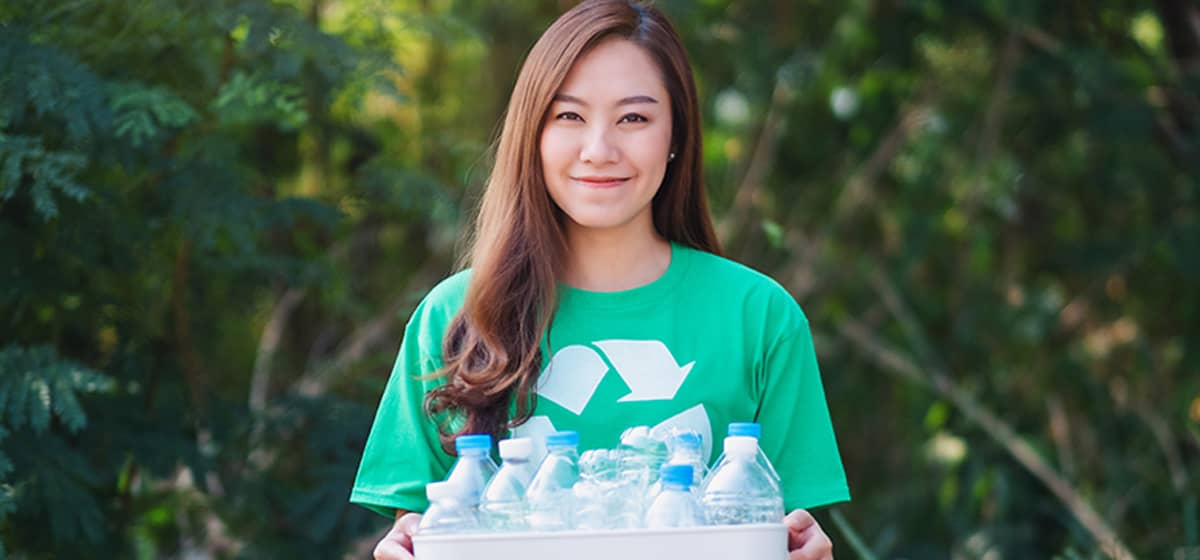
Ocean waste, plastic bottles and used coffee grounds – what do they all have in common? Well, they can all be recycled and made into brand new products! If you’re wondering what these waste materials can be made into – you’re in for a surprise!
As the country marks a year of the Singapore Green Plan 2030 in a few months, more and more businesses are investing in innovative methods to recycle and upcycle our everyday trash. This is especially timely and crucial given that consumerism continues on an upward trend. According to CNA, Singapore’s resource consumption per capita ranks 24th in the world, a sure sign that there is much room for improvement in this area.
In today’s blogpost, we want to spotlight four homegrown companies that are giving waste materials a brand-new lease of life. Read on to find out more!
1. Align Swim
A proudly Singaporean brand, Align Swim is anchored on the tenets of sustainability; every aspect of the brand’s decisions from production to distribution is made with our environment in mind.
All of their pieces are designed locally, and sent to an ethical factory in Bali, Indonesia to be manufactured. To minimise wastage, the brand is also conscious of not overproducing their swimwear – a thoughtful mindset shift in today’s fast fashion industry.
Each of its swimwear is produced from either Econyl, a form of regenerated nylon made from landfill or ocean waste items such as fishing nets, old carpets and textile scraps, or Repreve, a form of fibre made from recycled materials including plastic bottles.
This not only helps in saving these waste materials from polluting our oceans, but also reduces the energy and resources needed to make virgin materials, lowering our environmental impact and minimising greenhouse gases.
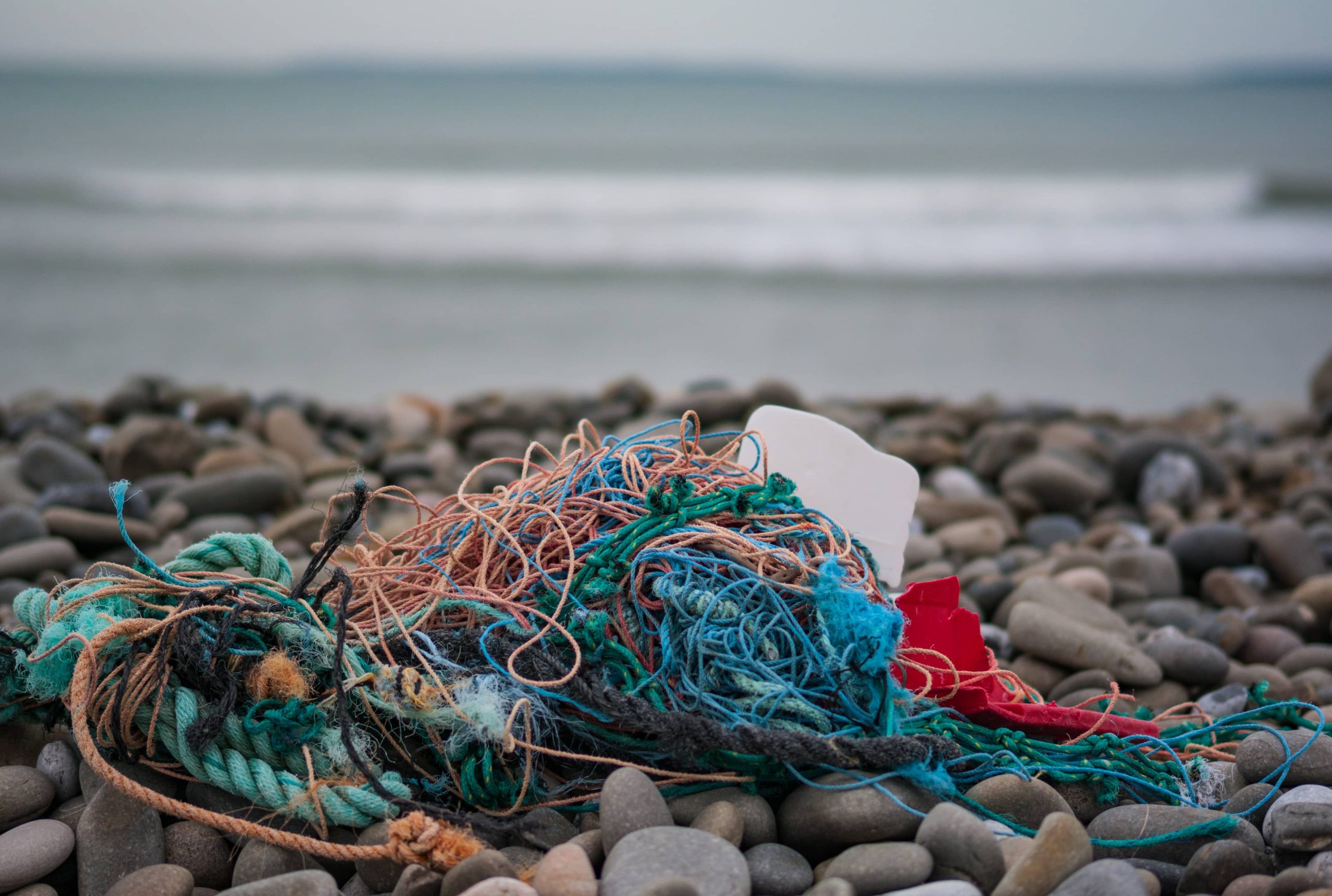
Beyond ensuring the sustainability of its swimwear, Align Swim also extends its eco-friendly initiatives to its mailing materials. All its products are shipped out in 100% compostable mailers or its custom recyclable Align Envelope. What’s more, if you’re looking to gift someone an Align Swim piece, look forward to having it beautifully wrapped in the brand’s custom designed Furoshiki Gift Wrap! The Furoshiki cloth can even be reused in many different ways including as a bag, scarf, or even passed on as a gift wrap for yet another gift.
2. Ayer-Ayer
A social enterprise, Ayer Ayer was born out of the mission to bring together different communities to create art pieces made from recycled microplastics. Not sure what microplastics actually are? Well, these small plastic pieces are actually the most prevalent type of marine debris found in our oceans, broken down from larger plastic waste that may have been disposed into our water bodies. While miniscule in size, these tiny pieces of plastic are harmful to marine life. Studies have shown that microplastics may disrupt these animals’ reproductive systems, cause liver damage and even alter their feeding behaviour.
Collecting and sorting these plastic trash that are washed up on our local shores, Ayer Ayer breathes new life into these materials by re-creating them into beautiful art pieces and furniture such as tables and chairs! These one-of-the-kind pieces can be found as bar tables at rooftop bar Potato Head Singapore, so do go and check them out!
Alternatively, you can also purchase unique art tiles made from plastic trash and use them as home decorative pieces. Ayer Ayer occasionally organises pop up sales of their one-of-a-kind artwork items, which you can keep an eye out for on their Facebook and Instagram!
For those who would prefer a hands-on experience, the brand also organises workshops that share with participants the many different facets of plastics; from production to recycling. To try your hand at making some handcrafted items from post-consumer plastic, check out more information here!
3. A1 Environment
Coffee is one of the most popular beverages in world and widely enjoyed across cultures all across the globe. But, have you ever wondered what happens to the used coffee grounds after our cup of joe is brewed?
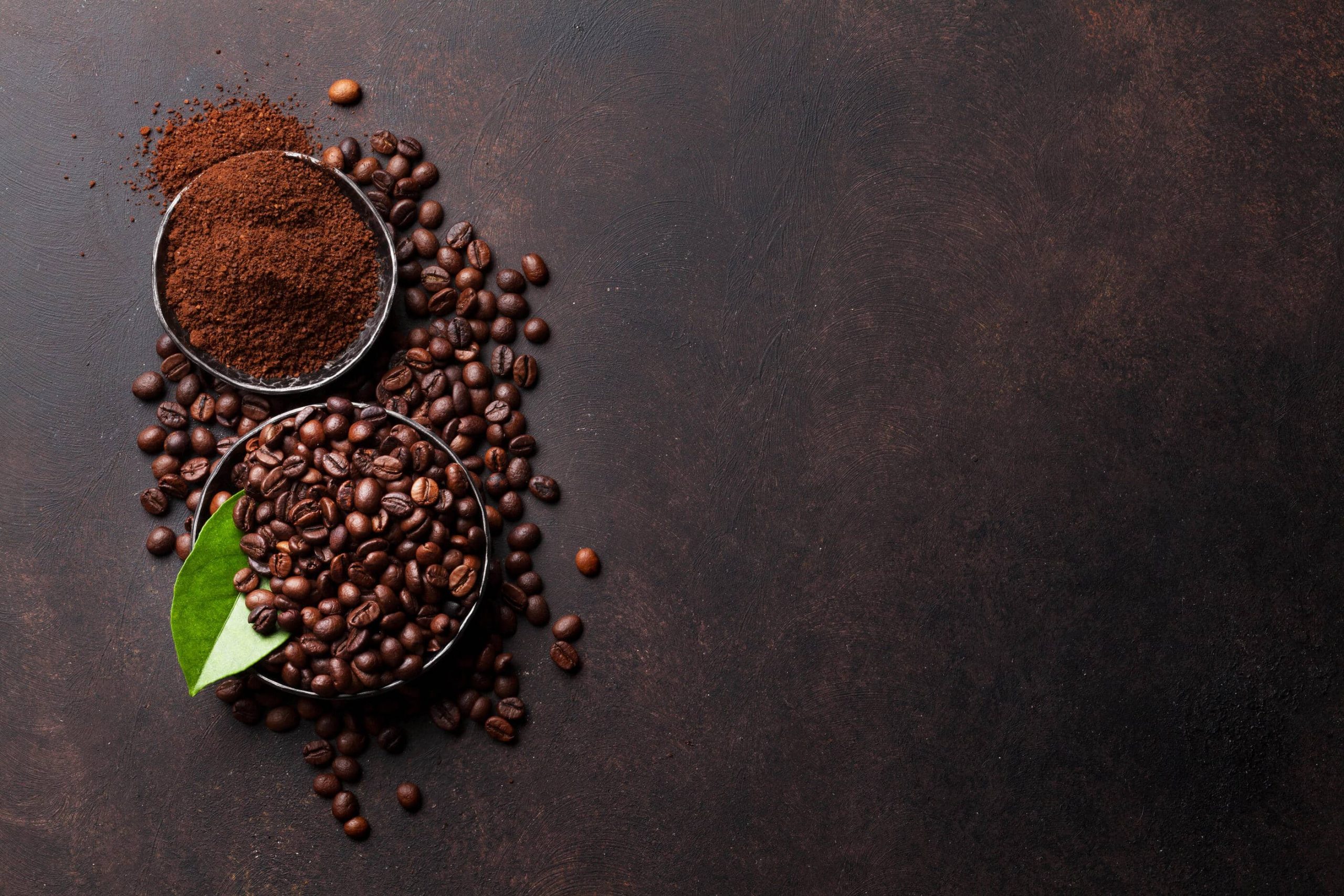
Currently, most of our spent coffee grounds is disposed into the bin and sent to our landfill for incineration, which contributes to our growing food waste issue. Eventually, these coffee grounds decompose in the landfill and release a great amount greenhouse gases, resulting in a direct impact to our environment.
However, one homegrown company is changing the landscape. With the aim to close the loop in the coffee industry, A1 Environment recovers coffee grounds from various industries including F&B and hospitality, and transforms them into wood-like panels that can be used to make furniture. To date, the company has converted more than 650,000kg of coffee, giving them a new lease of life. With this innovative solution, A1 Environment not only saves these used coffee grounds from the landfill but also reduces the number of trees cut down to make furniture!
As A1 Environment scales up its operations this year, the firm is planning to launch a range of furniture as well as other items such as flowerpots – stay tuned for updates on their Instagram and Facebook pages!
In addition, A1 Environment also uses these spent coffee grounds for food compost in community gardens to encourage other like-minded individuals to make use of these coffee grounds that deserve a second chance. You can get in touch with them to help boost and green up your local community gardens here!
4. Tay Paper Recycling
With a myriad of paper recycling services and more than 32 years of paper recycling experience, Tay Paper Recycling has played an instrumental role in diverting much of Singapore’s paper waste from the landfill. It offers the full suite of recycling services from on-site shredding, collecting to sorting, making it a breeze for any company to get onboard as one of their partners. In addition to paper, Tay Paper also recycles plastics, old clothes and e-waste.
Geneco is proud to have partnered with Tay Paper Recycling during our #ChangeBringsProsperity initiative again after last year’s successful collection and recycling of 410kg of red packets! From now till 6 March, simply drop off your used or excess red packets at any of the 24 Used Red Packet Recycling Bins located at any of our partners – CRU, IUIGA, Refash, and Wisma Atria – island-wide. These red packets will then be pulped and made into paper products including tissue, paper towels, and of course, even more paper!
And while you’re doing good for the environment, share with us which Used Red Packet Recycling Bin you will be dropping off your red packets at on our Instagram or Facebook posts to stand a chance to win $28 worth of eCapitaVouchers!
As we look towards embarking on a greener journey this year, we hope that you’d be inspired to support these local companies paving the way for a brighter and more sustainable tomorrow.
Together, let’s continue to #PowerTheChange and share our prosperity with our future generations.
Image Credits: Nylon Coffee Roasters
Source: The Sustainability Project
Your DIY guide to making recycled paper at home

Every day, Singapore produces approximately 16,120 tonnes of waste – that’s enough to fill about 7 Olympic-sized swimming pools! However, with a low domestic recycling rate of 13%, most of these waste are sent for incineration at our local landfill. Given our limited landmass in Singapore, this is a worrying trend as there is simply not enough space to hold all our trash! Our only landfill – Semakau Landfill – is estimated to be fully utilised by 2035.
As Singapore works towards building a circular economy, how can each of us contribute by increasing our recycling efforts? For starters, let’s focus on recycling one of the most common items – paper.
There are many ways which we can recycle paper. This includes dropping them off at the nearest recycling bin or selling them to our local karang guni – rag and bone man.
However, did you know that you can try paper recycling right at home as well, and customise them into your very own greeting cards or gift tags that’s truly one of its kind. So here’s an easy and fun eco-friendly guide to get you started on making your own recycled paper!
The entire process is simple – no fancy craft tools required. All you need are:
- Old / used papers such as newspapers, magazines, notebooks etcetera
- An A5-sized hard plastic mesh
- Cotton cloth
- Large container, preferably A4-sized or bigger
- Water
Step 1: Tear your old pieces of paper into small bits
Gather your old scraps of paper and make sure that they’re void of any plastic or staples before tearing them into small pieces about an inch wide and throwing them into your container. Feel free to make the pieces of paper as tiny as possible to get them soaked more easily in the next step.
Should you have some old scraps of thicker paper such as drawing paper or watercolour paper lying around, do also include them into the container as well – this will help in producing a stronger, thicker quality for your final product.
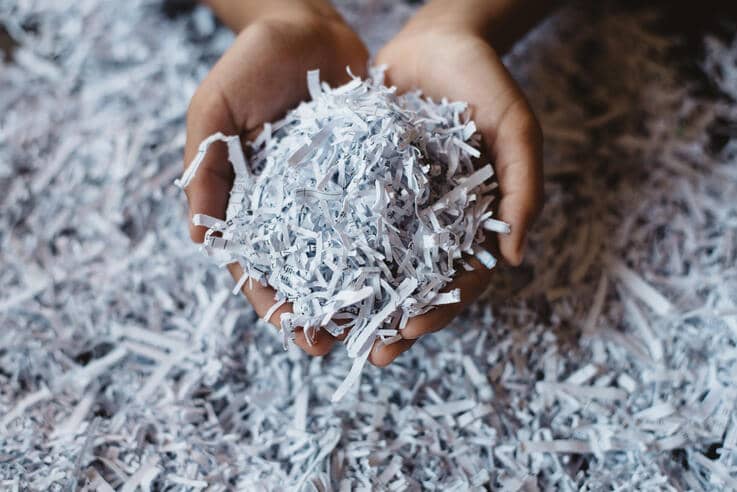
Pro Tip: Experiment with different colour combination paper scraps to produce beautiful handmade paper with a rustic feel. Throwing in different textured paper will also yield a more unique final product!
Step 2: Soak your papers bits
Thereafter, fill your container of paper scraps with water before leaving them to soak for 24 hours. While the ratio of pulp to water can vary depending on how thick you’d like your sheets to be, the general rule of thumb is to have equal measures of paper pieces and water. The more pulp to water, the thicker your paper will be, so feel free to experiment by changing up the ratio. Do remember to stir the bowl occasionally to prevent the paper pieces from clumping together!
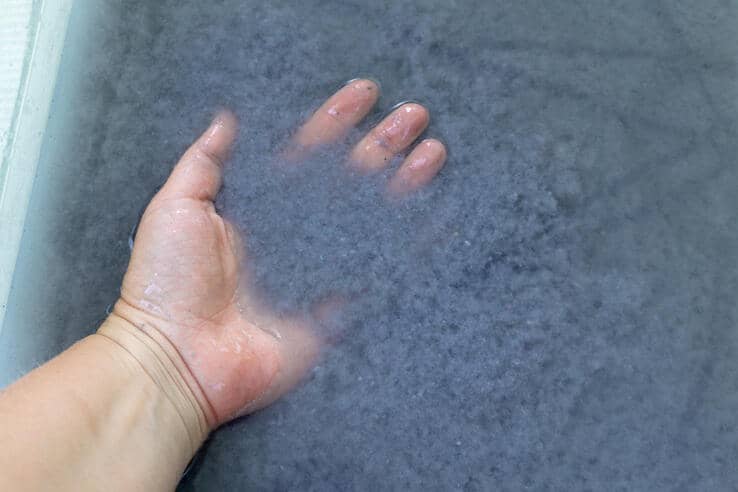
Pro Tip: To produce whiter paper, add about a tablespoon of white vinegar to bleach the pulp mixture
Step 3: Dip the A5 plastic mesh into the container
After 24 hours of soaking, you are now ready to start making your first piece of paper! For those of us wondering about the kind of plastic mesh that would work for this – check out an example below! Essentially, any plastic mesh that is hard and sturdy would do the trick.
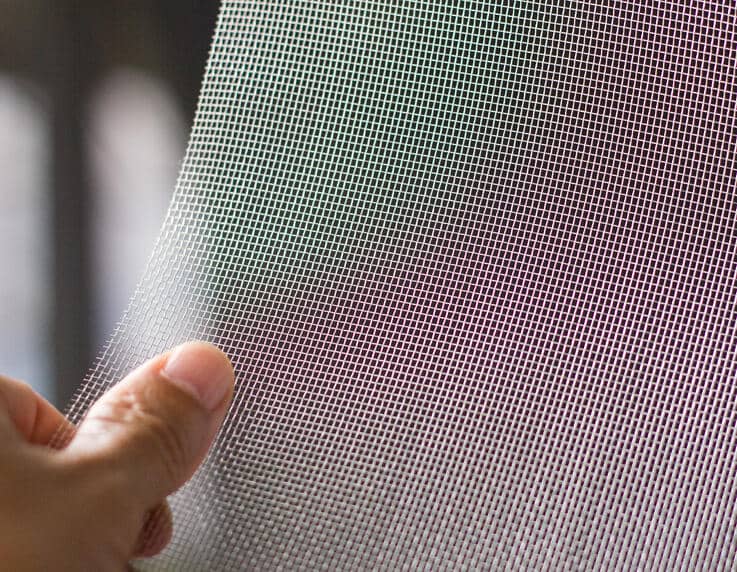
Slowly dip one side of your plastic mesh into the mixture at a 45-degree angle and flatten it at bottom of the container. Gradually, the paper mâché will start gathering on top of the mesh, covering it from top to bottom. Allow the paper mâché to settle on the mesh as evenly as possible.
Do be patient for this step ad you may end up with sheets of uneven and bumpy paper if the pulp mixture does not settle evenly!
Step 4: Shape the paper mâché
Lift the mesh out of the container with as little disturbance to the pulp mixture as possible. Thereafter, gently use your fingers to even out the borders of the paper mâché on the plastic mesh. Don’t worry if they’re not perfect – it’s part of the process of DIY-ing our own recycled paper!
Once you’re happy with the shape of your paper, you can even add some decorative elements such as dried leaves or dried rose petals to beautify your recycled paper. Feel free to let your creativity run!
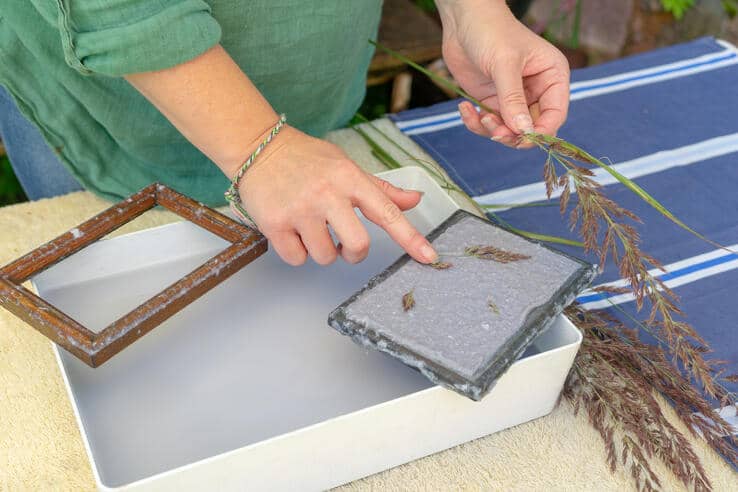
Step 5: Flip the paper mâché on a non-stick surface
Once the borders are more or less even, place the paper mâché side of the plastic mesh down on a non-stick surface, such as a wooden or glass table, before using your cotton cloth to soak as much water as possible from the top. When most of the excess water has been drained, carefully peel off the mesh and allow the paper mâché to dry overnight. If you’re excited to start using your recycled paper as quickly as possible, you can even use a hairdryer to hasten the process.
And that’s it! Once the paper mâché is completely dried, they should be slightly wavy and crisp. You can bind the various pieces together into your very own unique notebook or cut them up into smaller pieces to form a gift tag. You can even use these handmade papers as a Valentine’s Day card, or for other occasions and celebrations throughout the year – the possibilities are endless!
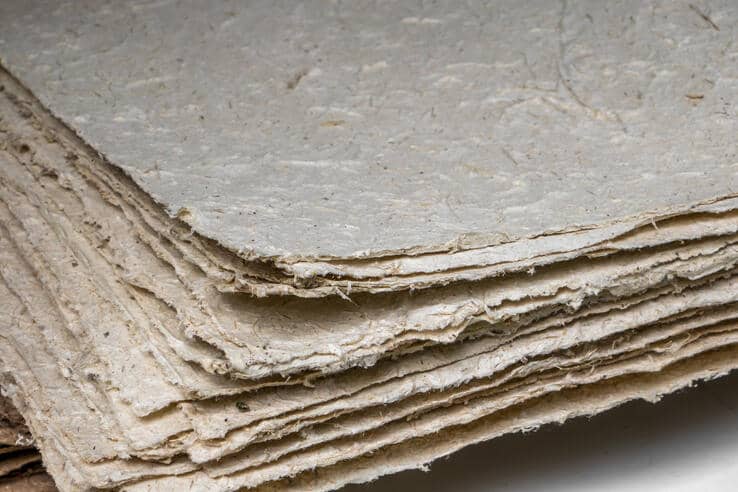
We hope that this easy tutorial will inspire you to recycle your old pieces of paper right at home. This activity is also a great opportunity to educate our little ones on how they can effect a change for our environment through such small but meaningful actions!
And if you find yourself wondering what to do with the stack of red packets you’ve collected this Chinese New Year, you can recycle them too by joining us in our #ChangeBringsProsperity initiative! Simply drop them off at any of our 25 Used Red Packet Recycling Bins located across the island from now till 6 March at Wisma Atria, or any IUIGA, CRU, and our Changemaker – Refash‘s outlets – after you’ve emptied them of course!
These red packets will then be collected by Tay Paper Recycling, where they’ll be pulped and made into other paper products such as tissue, paper towels and more writing paper!
Together, we can all #PowerTheChange by adopting a zero-waste lifestyle and work towards a greener future.
Image Credits: Nylon Coffee Roasters
Source: The Sustainability Project
